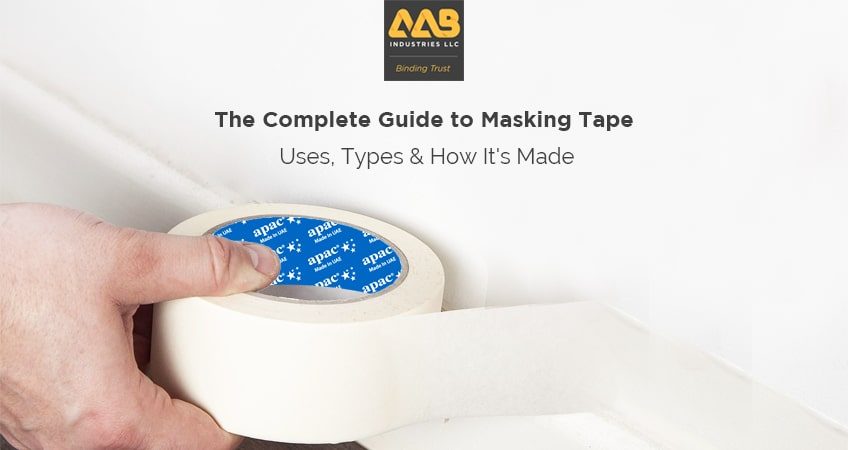Do you have the essential adhesive tapes in your tool or craft kit? If not, you might be missing out on some major benefits! Adhesive tapes like Masking Tape are incredibly versatile and can be used for various purposes around the home, office, or school. Let’s explore why Masking Tape is a must-have and how it’s made.
What is Masking Tape?
Masking Tape is a pressure-sensitive adhesive tape with a thin crepe paper backing. Its flexible design allows for easy tearing by hand while offering strong adhesion to multiple surfaces.
Features of Masking Tape
- Easy to tear
- Residue-free removal
- Hand-tearable
- Effective up to 80°C
- Versatile application across surfaces
How Is Masking Tape Made?
Here’s a quick breakdown of the masking tape production process:
- Making the Paper Base
The paper base of Masking Tape, typically made from crepe paper, provides strength and allows it to be easily torn by hand. - Adding Adhesive
The crepe paper is coated with a rubber latex-based adhesive that is strong enough for use on various surfaces but can be removed cleanly without leaving residue behind. - Drying the Adhesive
The tape passes through drying chambers, ensuring the adhesive properly adheres to the crepe paper without bleeding through. - Applying a Release Agent
Release paper is applied to the non-adhesive side, making it easy to unwind the tape without sticking. - Winding on the Core
The adhesive-coated crepe paper is wound into jumbo rolls, ready for cutting to size. - Cutting and Packaging
The final step involves cutting the tape into the desired widths and lengths, then packing it for shipping.
Common Uses of Masking Tape
- Labeling & Marking
Masking Tape is perfect for labeling items. It’s easy-to-write-on surface makes it a go-to choice for quick labels. - Painting
Blue painters tape, a type of masking tape, is ideal for ensuring clean paint lines. Its easy removal prevents damage to painted surfaces. - Crafting
Masking tape’s flexibility and ease of use make it an ideal tool for crafting projects, school activities, and even gift wrapping. - Packing
While lighter than standard packing tapes, masking tape can still be used for sealing and bundling lightweight packages. - Repair & Sealing
Whether for temporary repairs or sealing smaller items, masking tape is a handy fix-it solution.
Different Types of Masking Tapes
- General Purpose Masking Tape
Best suited for regular home and office use, it offers adhesion without damage and works well on smooth surfaces like walls, wood, and glass. - Automotive Masking Tape
Built for heavy-duty applications, automotive masking tape withstands higher temperatures (up to 95°C) and can be used on curved or metallic surfaces.
Masking Tape Sizes
Masking Tape is available in various sizes depending on its use. For example, 2-inch masking tape is ideal for sealing or packing, while thinner widths (1-inch or smaller) are commonly used for painting projects.
Frequently Asked Questions
What is the difference between masking and painters tape?
While both are types of masking tape, “painters tape” typically refers to higher-quality masking tapes designed for clean removal after painting, often in blue or green varieties.
Can you get custom masking tape?
Yes! Custom masking tape options are available for specific uses, including personalised branding and logo prints. AAB Industries can assist you in customisation.
What is Japanese masking tape?
Japanese masking tape, commonly known as Washi tape, is a decorative adhesive tape often used for crafting, decorating, and gift wrapping.
Whether it’s blue painters tape, black masking tape, or even custom options, Masking Tape remains a versatile and indispensable tool in every kit.


